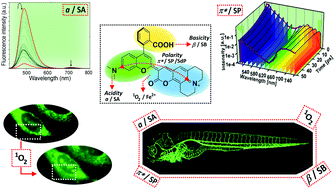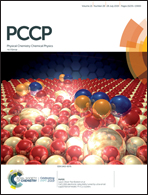Unravelling the modus-operandi of chromenylium-cyanine fluorescent probes: a case study†
Abstract
Small-molecule fluorescent probes having optimized optical properties, such as high photostability and brightness, local microenvironment sensitivity and specific subcellular localizations, are increasingly available. Although the basis for designing efficient fluorophores for bioimaging applications is well established, implementing an improvement in a given photophysical characteristic always tends to compromise another optical property. This problem has enormous consequences for in vivo imaging, where ensuring a specific localization and precise control of the probe response is challenging. Herein we discuss a fluorescent probe, CC334, as a case study of the chromenylium-cyanine family that commonly exhibits highly complex photophysical schemes and highly interfered bioanalytical responses. By an exhaustive and concise analysis of the CC334 optical responses including detailed spectroscopic calibrations, steady-state microenvironment effects, ultrafast photophysics analysis and computational studies, we elucidate a new strategy to apply the probe in the singlet oxygen reactive oxygen species (1O2-ROS) monitoring using in vitro and in vivo models. The probe provides a new avenue for designing fluorescent probes to understand the dynamic behavior of subcellular environments.



 Please wait while we load your content...
Please wait while we load your content...